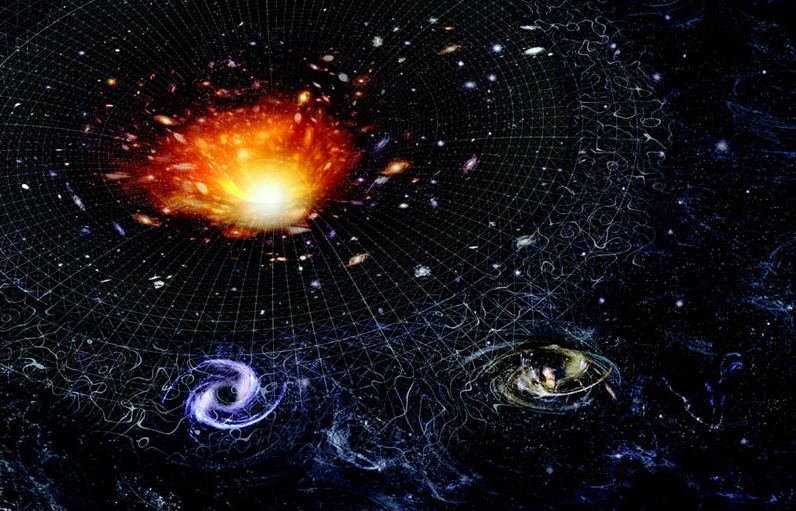Ways The Universe Could End

The universe came into existence by an explosion dubbed as the ‘Big Bang’. Even though such an idea remains as a theory, scientists have produced significant amounts of evidence, including the ever expanding universe to convince the scientific community. However collecting similar evidence for the end of the universe still remains a challenge, especially due to the ‘accelerating universe’ phenomenon.
The universe began its expansion since the big bang, however counterintuitively the rate of expansion is increasing with time. Meaning that the expansion of the universe is accelerating and scientists cannot explain the reason for such an incidence, hence they proposed the idea of ‘dark energy’ and relate it to the unimpeded motion of the galaxies. As an analogy, imagine a basketball thrown straight up into the air. Due to earth gravitational field the ball would reach its maximum height and from that point onwards it would fall down. But dark energy doesn’t let this happen and instead of this, the ball projected into air would begin accelerating, leave the earth’s atmosphere and venture into space at increasing speeds. Before the acceleration of the universe was observed, it was thought that eventually the universe would lose its energy to expand and slowly stop its expansion and reverse. The inception of dark energy leads to three main predictions of how the universe might end.
The Big Rip
The expansion of the universe creates space between objects that have mass. This means galaxies are moving away from each other (this creates a red shift upon them, which was first observed and related to the expansion of the universe by Edwin Hubble). But not only galaxies; planets, stars within such galaxies would also attempt of move away due the expansion of the universe. However the magnanimous gravitational field of the galaxies and stars holds them together. But when the expansion of the universe gets so fast that gravity is unable to hold celestial structures together, the Big Rip occurs. First of all galaxies would disassociate into single units of stars and planets. Soon celestial bodies would be broken down into atoms. The expansion of universe would soon accelerate and can even begin to expand faster than light. Hence the speed of light is the limit at which any object could travel at, atoms itself would be broken down into electrons, protons and neutrons as, they cannot interact with other particles moving in space faster than light. Soon the universe would be filled be units of particles that would interact with nothing else.
Heat death and Big freeze
Heat death relies on a similar scenario to the Big Rip but instead of the particles of matter disassociating, they would be converted into radiation as the universe expands. When nebulae required for star formation runs out, the stars that remain would slowly die and be converted into radiation. This reaches a point where all matter within the universe is converted into radiation, and even those would decay leaving absolutely nothing remaining.
Big Crunch and Big Bounce
Big Crunch was first conceived within the precepts of the absence of dark energy. However currently changed as it infers to the subsequent disappearance or reduction dark energy in the future. If this occurs then gravity would be the prevalent force which would attempt to merge all matter together. This would pull stars, planets and galaxies together making the universe smaller and smaller step by step. The reduction in size of the universe would heat it up, and massive black holes would devour all matter (hence called a ‘Crunch’) including itself. The Big Bounce states that such processes like the big crunch, occur periodically, and have produced many universes before and would produce infinitely many universes in the future after one ends.
A. Yathushihan

